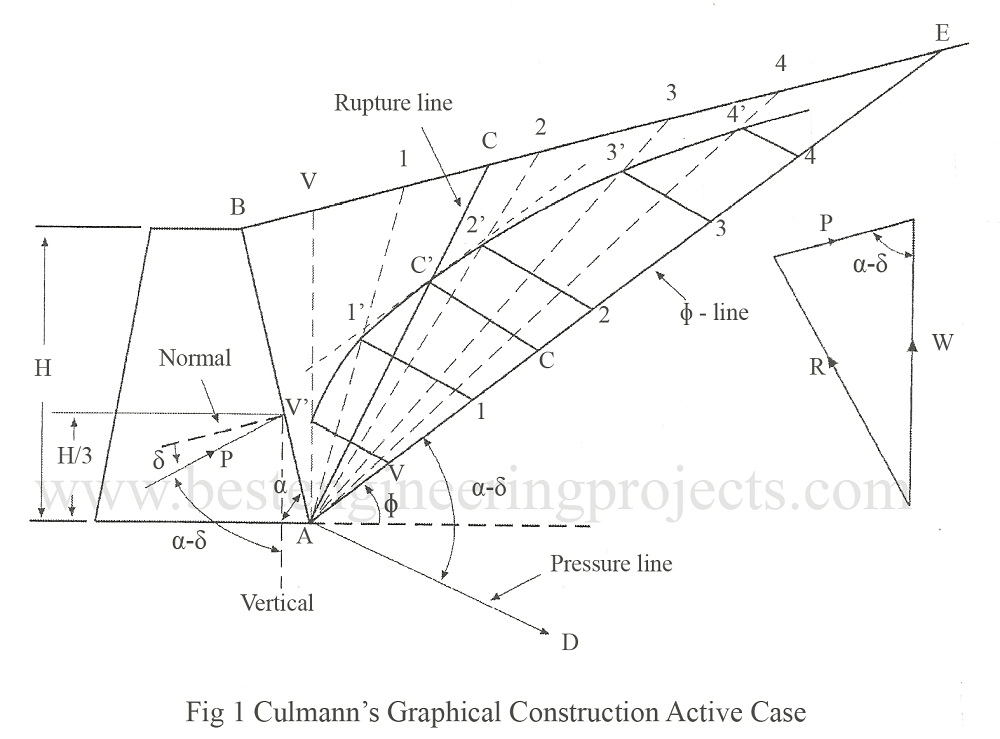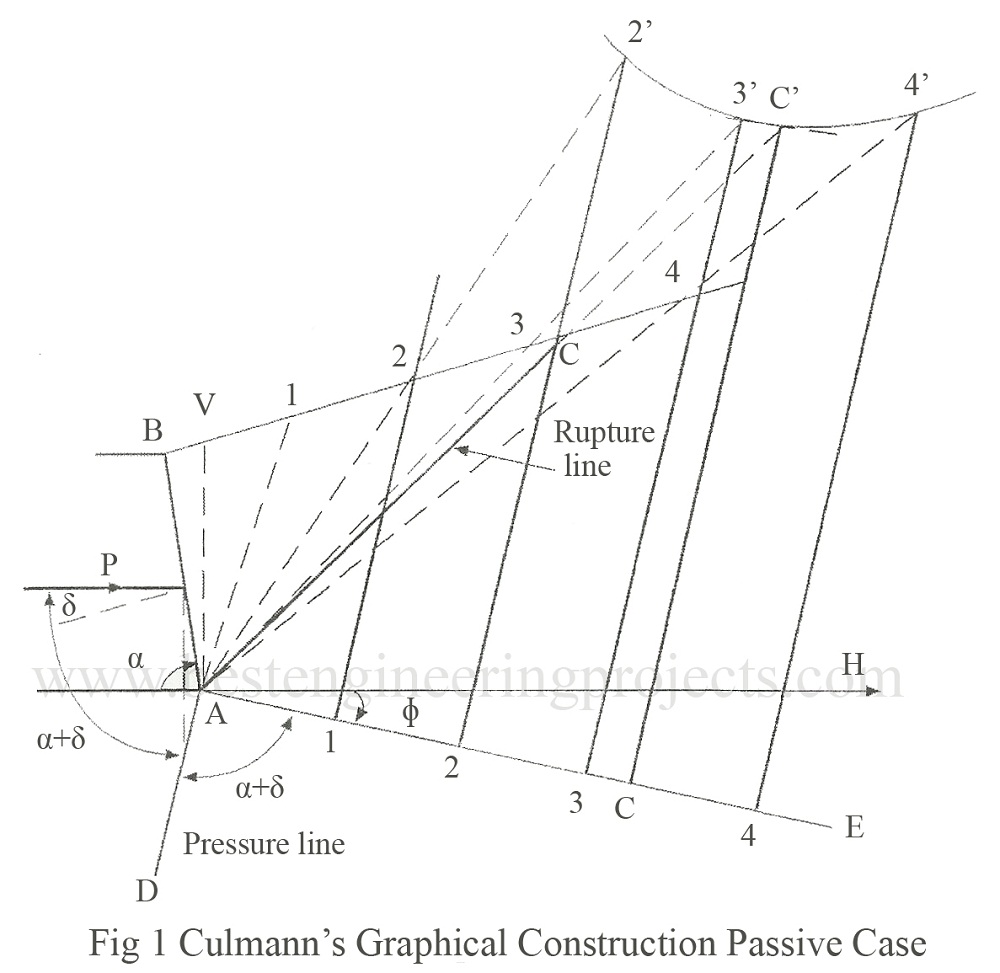Culmann Graphical Method for Active and Passive Case: In this method a retaining Wall is drawn to a suitable scale as shown in the Fig.1 below.
The Various steps in the procedure are:
- Draw [late] \phi [/latex]-line AE at an angle
with the horizontal.
- Lay off on AE distances AV, A1, A2, A3 etc to a suitable scale to represent the weight of wedges ABV, AB1, AB2, AB3, and so on.
- Lay off AD at an angle equal to
to the line AE. The line AD is called pressure line.
- Draw lines parallel to AD from points V, 1, 2, 3 to intersect the assumed lines AV, A1, A2, A3 at points V’, l’, 2′, 3′ etc respectively.
- Join points V’, l’, 2′, 3′ etc by a smooth curve which is the pressure locus.
- Select the point C’ on pressure locus such that the tangent to the curve is parallel to the
-line AE.
- Draw CC’ parallel to the pressure line AD. The magnitude of CC’ in its natural units gives the active pressure Pa.
- Join AC’ and produce to meet the surface of the backfill at C. AC is the rupture line.
Culmann Graphical Method for Passive Case
In this method a retaining wall is drawn to a suitable scale as shown in the Fig.2 below.
The various procedure steps in culmann graphical method for active and passive case:
- Draw
-line AE at an angle
below the horizontal.
- Lay off on AE distances A2, A3, A4 etc to a suitable scale to represent the weight of wedges AB2, AB3, AB4, and so on.
- Lay off AD at an angle equal to
to the line AE. The line AD is called pressure line.
- Draw lines parallel to AD from points, 2, 3, 4 etc to intersect the weight vectors A2, A3, A4 at points 2′, 3′, 4′ etc respectively.
- Join points, 2′, 3′, 4′ etc by a smooth curve which is the pressure locus.
- Select the point C’ on pressure locus curve such that the line tangent to the curve is parallel to
-line AE.
- Draw CC’ parallel to the pressure line AD. The magnitude of CC’ in its natural units gives the passive pressure Pp.
- Join AC’. The line cuts the surface of the backfill at C. The line AC is the rupture line.


how solutin is obtained in culmann and reebnann methods if surchrge is acting on backfill?